Some Simpson- and Ostrowski-Type Integral Inequalities for Generalized Convex Functions in Multiplicative Calculus with Their Computational Analysis
Abstract
1. Introduction
2. Multiplicative Calculus
3. Main Results
3.1. Simpson-Type Inequalities for s-Convex
3.2. Ostrowski-Type Inequalities for s-Convex
4. Numerical Examples and Their Computational Analysis
5. Applications
5.1. Applications to Quadrature Formula
5.2. Applications to Special Means of Real Numbers
6. Conclusions
Author Contributions
Funding
Data Availability Statement
Conflicts of Interest
References
- Mitrinovic, D.S.; Pecaric, J.; Fink, A.N. Inequalities Involving Functions and Their Integrals and Derivatives; Springer Science & Business Media: Berlin/Heidelberg, Germany, 1991; Volume 53. [Google Scholar]
- Ali, M.A.; Mateen, A.; Feckan, M. Study of Quantum Ostrowski’s-Type Inequalities for Differentiable convex Functions. Ukr. Math. J. 2023, 75, 7–27. [Google Scholar] [CrossRef]
- Pachpatte, B.G. On an inequality of Ostrowski’s type in three independent variables. J. Math. Anal. Appl. 2000, 249, 583–591. [Google Scholar] [CrossRef]
- Budak, H.; Tunç, T.; Sarikaya, M.Z. Fractional Hermite-Hadamard type inequalities for interval valued functions. Proc. Am. Math. Soc. 2020, 148, 705–718. [Google Scholar] [CrossRef]
- Daletskii, Y.L.; Teterina, N.I. Multiplicative stochastic integrals. Uspekhi Mat. Nauk 1972, 27, 167–168. [Google Scholar]
- Ali, M.A.; Budak, H.; Sarikaya, M.Z.; Zhang, Z. Ostrowski and Simpson type inequalities for multiplicative integrals. Proyecciones 2021, 40, 743–763. [Google Scholar] [CrossRef]
- Bashirov, A.E.; Riza, M. On complex multiplicative differentiation. TWMS J. Appl. Eng. Math. 2011, 1, 75–85. [Google Scholar]
- Özcan, S. Some Integral Inequalities of Hermite-Hadamard Type for Multiplicatively s-Preinvex Functions. Int. J. Math. Model. Comput. 2019, 9, 253–266. [Google Scholar] [CrossRef]
- Dragomir, S.S.; Fitzpatrick, S. The Hadamard’s inequality for s-convex functions in the second sense. Demonstr. Math. 1999, 32, 687–696. [Google Scholar]
- Sarikaya, M.Z.; Set, E.; Ozdemir, M.E. On new inequalities of Simpson’s type for s-convex functions. Appl. Math. Comput. 2010, 60, 2191–2199. [Google Scholar] [CrossRef]
- Khan, S.; Budak, H. On midpoint and trapezoidal type inequalities for multiplicative integral. Mathematica 2017, 59, 124–133. [Google Scholar]
- Özcan, S. Hermite-Hadamard type ınequalities for multiplicatively s-convex functions. Cumhur. Sci. J. 2020, 41, 245–259. [Google Scholar] [CrossRef]
- Özyapici, A.; Misirli, E. Exponential approximation on multiplicative calculus. In Proceedings of the 6th ISAAC Congress, Ankara, Turkey, 13–18 August 2007; p. 471. [Google Scholar]
- Breckner, W.W. Stetigkeitsaussagen füreine Klasse verallgemeinerter konvexer funktionen in topologischen lin-earen Räumen. Publ. Inst. Math. 1978, 23, 13–20. [Google Scholar]
- Hudzik, H.; Maligranda, L. Some remarks on s-convex functions. Aequationes Math. 1994, 4, 100–111. [Google Scholar] [CrossRef]
- Pycia, M. A direct proof of the s-Hölder continuity of Breckner s-convex functions. Aequationes Math. 2001, 61, 128–130. [Google Scholar] [CrossRef]
- Ali, M.A.; Kara, H.; Tariboon, J.; Asawasamrit, S.; Budak, H.; Hezenci, F. Some new Simpson’s formula-type inequalities for twice-differentiable convex functions via generalized fractional operators. Symmetry 2021, 13, 2249. [Google Scholar] [CrossRef]
- Meftah, B. Some new Ostrowski’s inequalities for functions whose nth derivatives are logarithmically convex. Ann. Math. Sil. 2017, 32, 275–284. [Google Scholar] [CrossRef]
- Rangel-Oliveros, Y.; Nwaeze, E.R. Simpson’s type inequalities for exponentially convex functions with applications. Open J. Math. Sci. 2021, 5, 84–94. [Google Scholar] [CrossRef]
- Mateen, A.; Zhang, Z.; Ali, M.A.; Feckan, M. Generalization of some integral inequalities in multiplicative calculus with their computational analysis. Ukr. Math. J. 2023. [Google Scholar] [CrossRef]
- Grossman, M.; Katz, R. Non-Newtonian Calculus; Lee Press: Pigeon Cove, MA, USA, 1972. [Google Scholar]
- Aniszewska, D. Multiplicative runge-Kutta methods. Nonlinear Dyn. 2007, 50, 265–272. [Google Scholar] [CrossRef]
- Riza, M.; Özyapici, A.; Misirli, E. Multiplicative finite difference methods. Q. Appl. Math. 2009, 67, 745–754. [Google Scholar] [CrossRef]
- Bhat, A.H.; Majid, J.; Shah, T.R.; Wani, I.A.; Jain, R. Multiplicative Fourier transform and its applications to multiplicative differential equations. J. Comput. Math. Sci. 2019, 10, 375–383. [Google Scholar] [CrossRef]
- Bhat, A.H.; Majid, J.; Wani, I.A. Multiplicative Sumudu transform and its Applications. Emerg. Technol. Innov. Res. 2019, 6, 579–589. [Google Scholar]
- Misirli, E.; Gurefe, Y. Multiplicative Adams Bashforth-Moulton methods. Numer. Algorithms 2011, 57, 425–439. [Google Scholar] [CrossRef]
- Chasreechai, S.; Ali, M.A.; Naowarat, S.; Sitthiwirattham, T.; Nonlaopon, K. On Some Simpson’s and Newton’s Type Inequalities in Multiplicative Calculus with Applications. AIMS Math. 2023, 8, 3885–3896. [Google Scholar] [CrossRef]
- Bashirov, A.E. On line and double multiplicative integrals. TWMS J. Appl. Eng. Math. 2013, 3, 103–107. [Google Scholar]
- Xi, B.-Y.; Qi, F. Some integral inequalities of Hermite-Hadamard type for s-logarithmically convex functions. Acta Math. Sci. Engl. Ser. 2015, 35A, 515–526. [Google Scholar]
- Bai, Y.M.; Qi, F. Some integral inequalities of the Hermite-Hadamard type for log-convex functions on co-ordinates. J. Nonlinear Sci. 2016, 9, 5900–5908. [Google Scholar] [CrossRef]
- Dragomir, S.S. Further inequalities for log-convex functions related to Hermite-Hadamard result. Proyecciones 2019, 38, 267–293. [Google Scholar] [CrossRef]
- Set, E.; Ardiç, M.A. Inequalities for log-convex functions and p-function. Miskolc Math. Notes 2017, 18, 1033–1041. [Google Scholar] [CrossRef]
- Zhang, X.M.; Jiang, W.D. Some properties of log-convex function and applications for the exponential function. Comput. Math. Appl. 2012, 63, 1111–1116. [Google Scholar] [CrossRef]
- Bashirov, A.E.; Kurpınar, E.M.; Özyapıcı, A. Multiplicative calculus and its applications. J. Math. Anal. Appl. 2008, 337, 36–48. [Google Scholar] [CrossRef]
- Ali, M.A.; Abbas, M.; Zhang, Z.; Sial, I.B.; Arif, R. On integral inequalities for product and quotient of two multiplicatively convex functions. Asian Res. J. Math. 2019, 12, 1–11. [Google Scholar] [CrossRef]
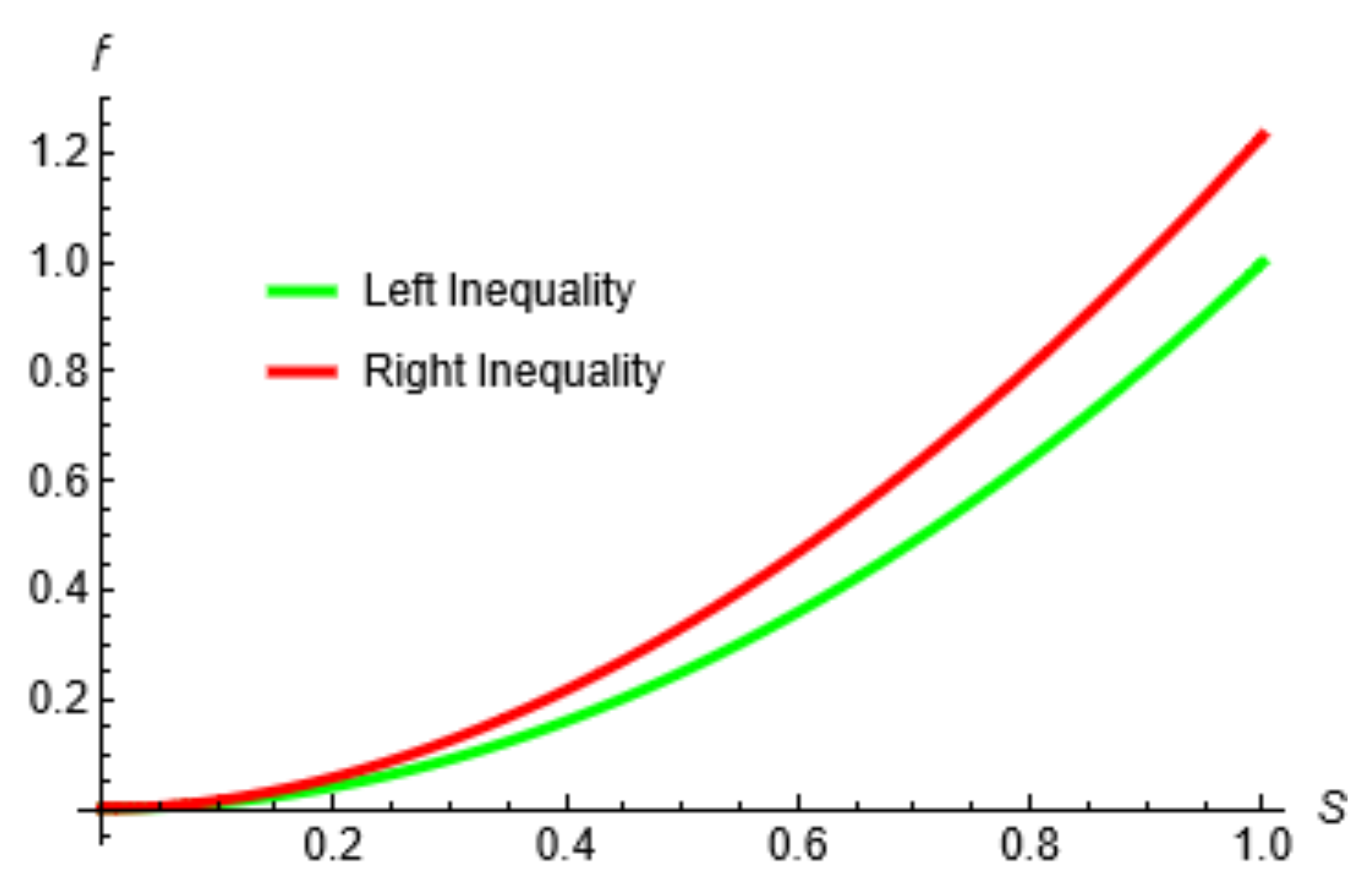
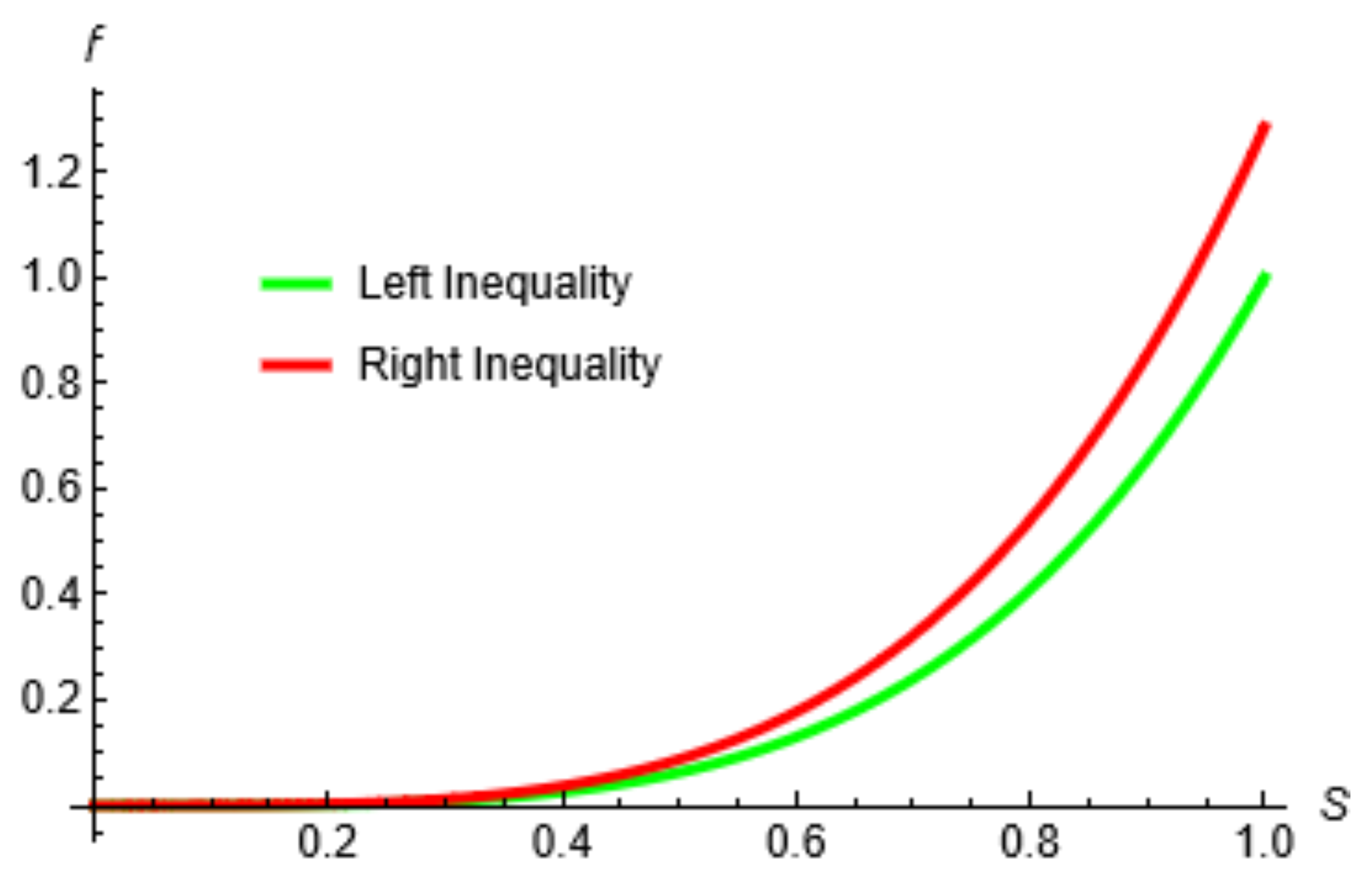
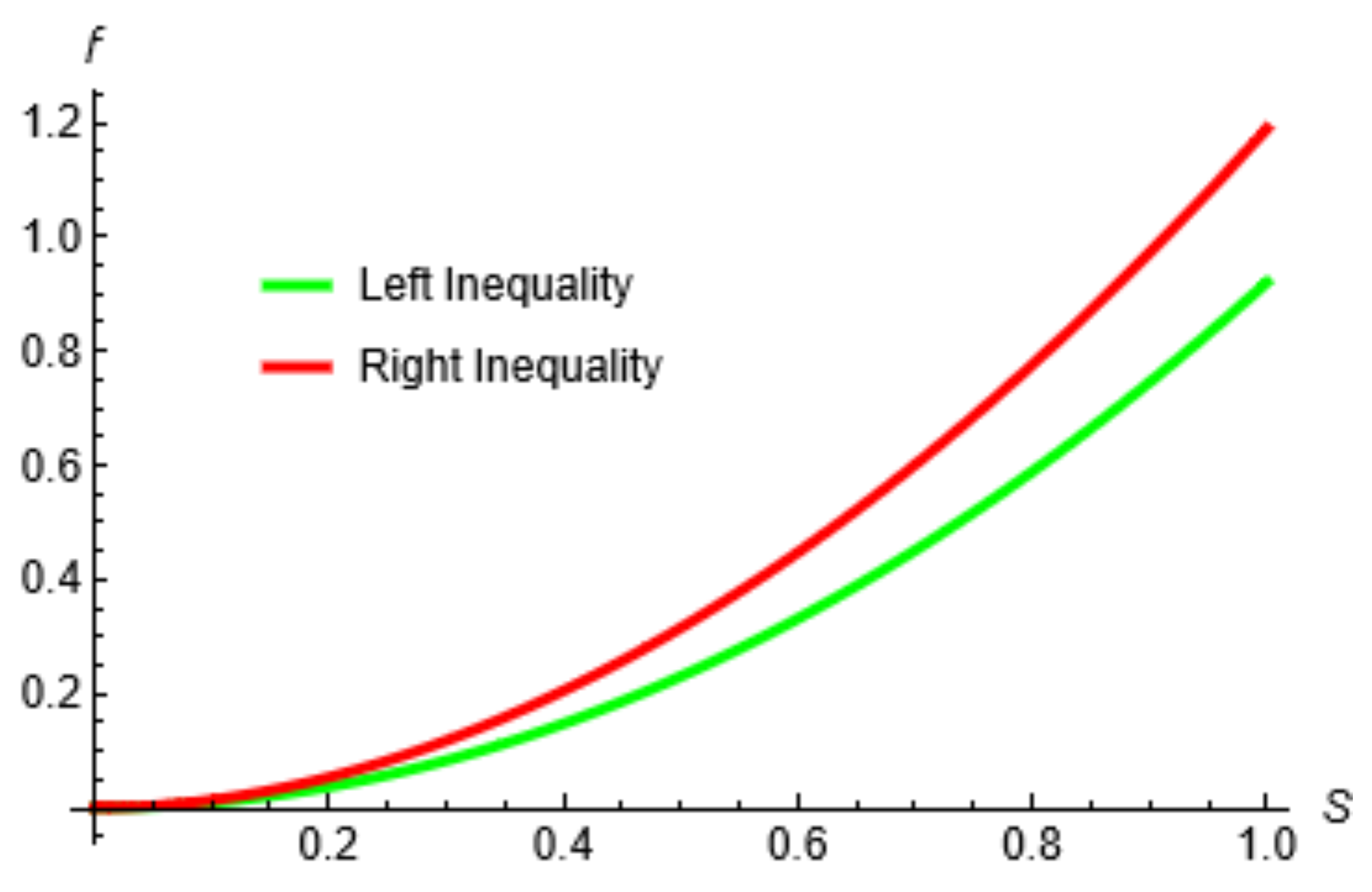
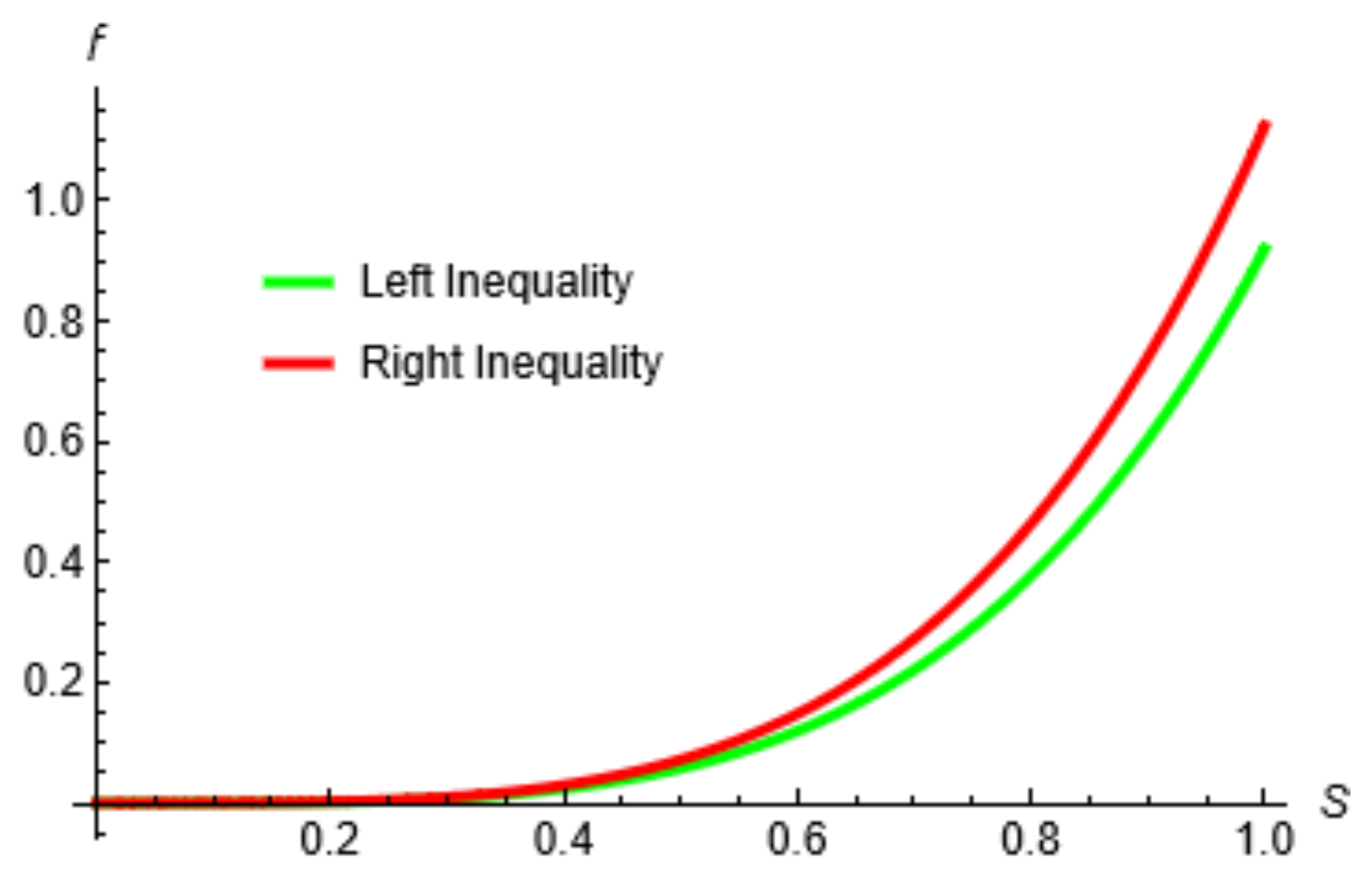
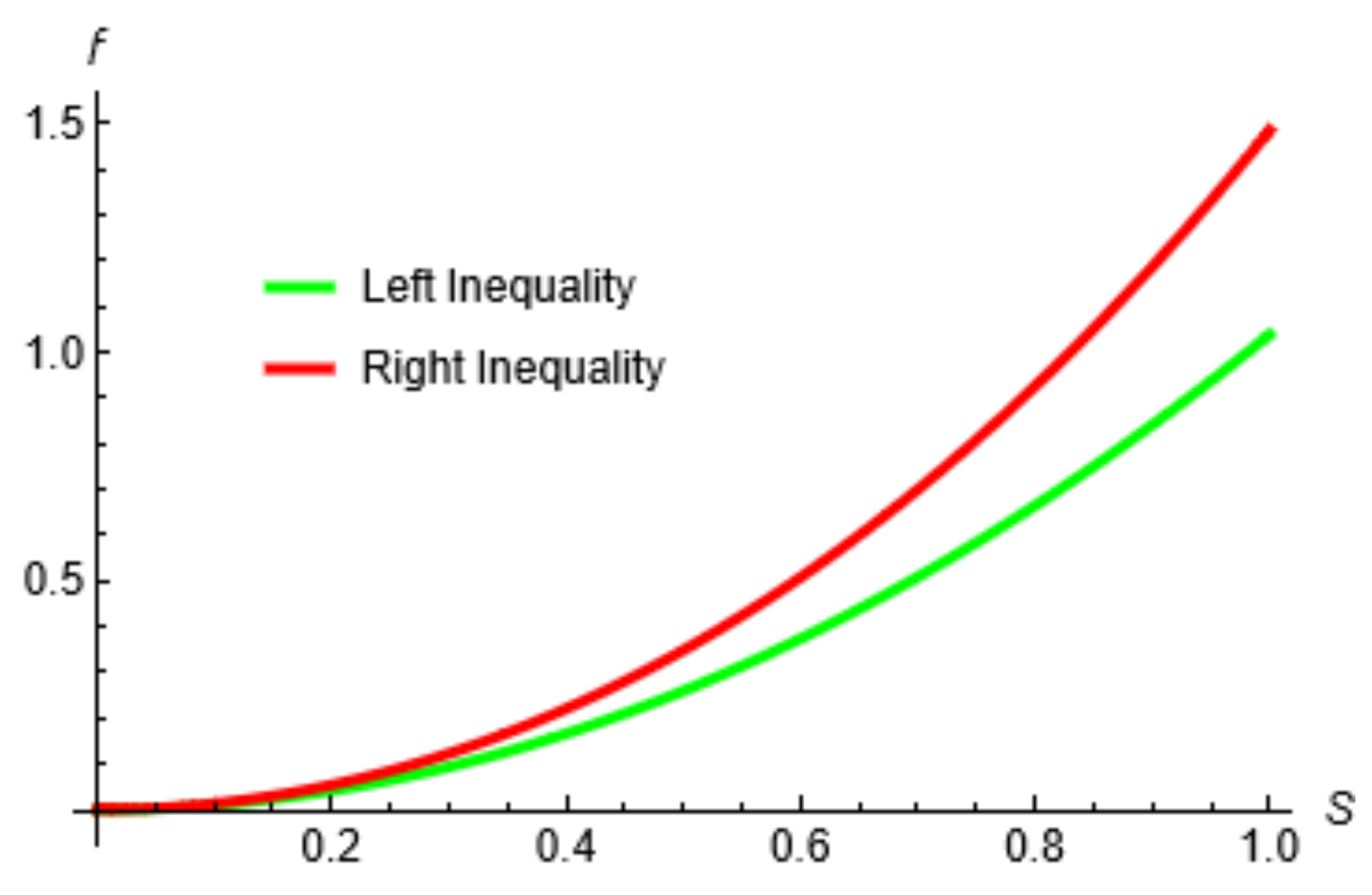
| s | Left Term | Right Term |
|---|---|---|
| 0.2 | 0.0399 | 0.0568 |
| 0.4 | 0.1598 | 0.2166 |
| 0.6 | 0.3596 | 0.4692 |
| 0.8 | 0.6393 | 0.8087 |
| s | Left Term | Right Term |
|---|---|---|
| 0.2 | 0.0015 | 0.0024 |
| 0.4 | 0.0255 | 0.0365 |
| 0.6 | 0.1294 | 0.1771 |
| 0.8 | 0.4092 | 0.5407 |
| s | Left Term | Right Term |
|---|---|---|
| 0.2 | 0.0368 | 0.0533 |
| 0.4 | 0.1472 | 0.2049 |
| 0.6 | 0.3312 | 0.4470 |
| 0.8 | 0.5888 | 0.7758 |
| s | Left Term | Right Term |
|---|---|---|
| 0.2 | 0.0014 | 0.0018 |
| 0.4 | 0.0235 | 0.0294 |
| 0.6 | 0.1192 | 0.1477 |
| 0.8 | 0.3768 | 0.4633 |
| s | Left Term | Right Term |
|---|---|---|
| 0.2 | 0.0415 | 0.0540 |
| 0.4 | 0.1663 | 0.2207 |
| 0.6 | 0.3741 | 0.5081 |
| 0.8 | 0.6650 | 0.9260 |
Disclaimer/Publisher’s Note: The statements, opinions and data contained in all publications are solely those of the individual author(s) and contributor(s) and not of MDPI and/or the editor(s). MDPI and/or the editor(s) disclaim responsibility for any injury to people or property resulting from any ideas, methods, instructions or products referred to in the content. |
© 2024 by the authors. Licensee MDPI, Basel, Switzerland. This article is an open access article distributed under the terms and conditions of the Creative Commons Attribution (CC BY) license (https://creativecommons.org/licenses/by/4.0/).
Share and Cite
Zhan, X.; Mateen, A.; Toseef, M.; Aamir Ali, M. Some Simpson- and Ostrowski-Type Integral Inequalities for Generalized Convex Functions in Multiplicative Calculus with Their Computational Analysis. Mathematics 2024, 12, 1721. https://doi.org/10.3390/math12111721
Zhan X, Mateen A, Toseef M, Aamir Ali M. Some Simpson- and Ostrowski-Type Integral Inequalities for Generalized Convex Functions in Multiplicative Calculus with Their Computational Analysis. Mathematics. 2024; 12(11):1721. https://doi.org/10.3390/math12111721
Chicago/Turabian StyleZhan, Xinlin, Abdul Mateen, Muhammad Toseef, and Muhammad Aamir Ali. 2024. "Some Simpson- and Ostrowski-Type Integral Inequalities for Generalized Convex Functions in Multiplicative Calculus with Their Computational Analysis" Mathematics 12, no. 11: 1721. https://doi.org/10.3390/math12111721
APA StyleZhan, X., Mateen, A., Toseef, M., & Aamir Ali, M. (2024). Some Simpson- and Ostrowski-Type Integral Inequalities for Generalized Convex Functions in Multiplicative Calculus with Their Computational Analysis. Mathematics, 12(11), 1721. https://doi.org/10.3390/math12111721








